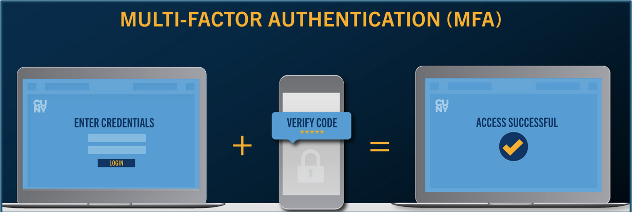Multi-Factor Authentication (MFA) is one of the most effective ways to protect your digital identity. In today’s world, passwords alone are no longer enough to keep your accounts secure—they can be guessed, stolen, or leaked in data breaches. MFA adds an extra layer of protection by requiring a second form of verification, such as a code sent to your phone, a prompt from an authentication app, or biometric data like a fingerprint.
For students, this means your university email, class materials, grades, and financial information are better protected. Even if someone manages to get your password, they won’t be able to log in without your second factor. This is especially important for university systems, which often contain sensitive personal and academic data.
It’s also important to understand that not all MFA methods are the same, and the type of authentication you’ll use can vary depending on the application or service. Some systems may send a text message or make a phone call to verify your identity, while others may require you to approve a notification in an app like Microsoft Authenticator. The method used depends on how the application is configured and what options it supports.
Beyond personal protection, MFA helps safeguard the entire university community. When everyone uses MFA, it reduces the risk of large-scale cyberattacks, phishing scams, and unauthorized access to shared resources. That’s why starting Tuesday, September 16, 2025, MFA will be required to access university systems. Enabling MFA now ensures you’re ready and secure when the policy goes into effect.

